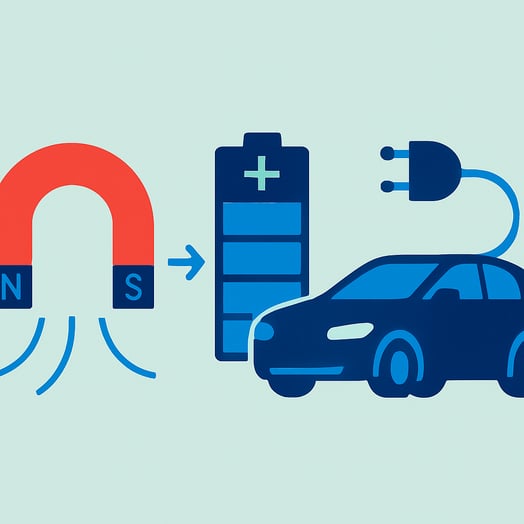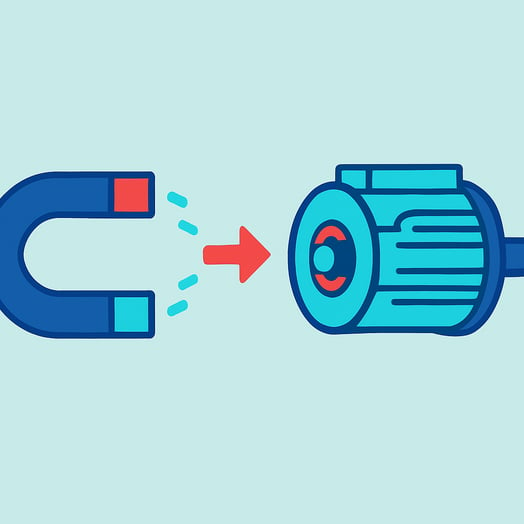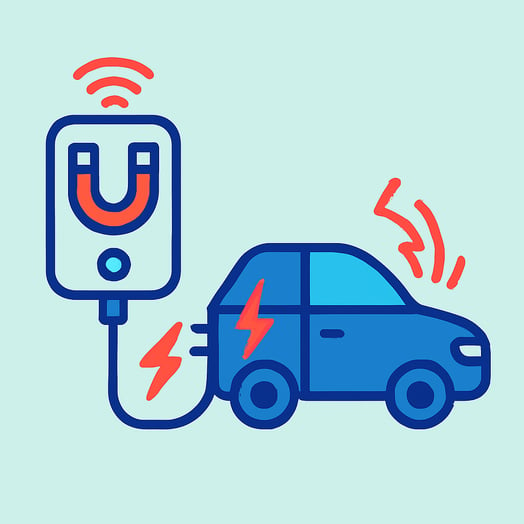While Magnetizers have no direct impact on an EV battery's chemistry or capacity, they are absolutely critical for the component that uses the battery's power: the electric motor. An efficiently magnetized motor uses battery energy more effectively, maximizing vehicle performance and range.
This distinction is crucial. The magnetizer's role isn't to charge or condition the battery, but to perfect the motor that turns the battery's stored electrical energy into the mechanical force that moves the vehicle. Let's break down exactly how this works.
Frequently Asked Questions
Do magnetizers charge or improve an EV battery?
No, a magnetizer has no direct impact on an EV battery's chemistry or capacity. Its role is to perfect the electric motor, which uses the battery's stored energy more efficiently as a result.
What impact does a magnetizer/magnetizing system have on EV performance?
The primary role of a magnetizer is to precisely and powerfully magnetize the permanent magnets within an EV's electric motor. This process ensures the magnets reach full saturation, unlocking the motor's maximum potential for performance and efficiency.
How does proper magnetization improve EV performance?
Proper magnetization maximizes motor efficiency, allowing it to convert more electrical energy into torque with less waste. This leads to better overall vehicle range, ensures consistent performance from one vehicle to the next, and enables the use of complex, modern motor designs.
What impact does a magnetizer/magnetizing system have on EV performance?

An electric vehicle is a system of energy conversion. The battery stores electrical energy, and the motor converts it into rotational motion to turn the wheels. The heart of many high-performance EV motors consists of powerful permanent magnets, typically made from rare earth materials like Neodymium (NdFeB).
However, these magnets often aren’t assembled in their magnetized state. They must be precisely and powerfully magnetized to unlock their full potential. This is the specific and vital job of a magnetizer.
Why High-Performance Magnetization is Non-Negotiable for EVs

EV motors operate under demanding conditions and must be incredibly efficient to maximize the vehicle's range. The magnets inside them require an intense magnetic field—often 3 to 5 Tesla—to reach full "saturation," meaning they achieve their maximum possible magnetic strength.
Failing to achieve full saturation results in a weaker, less efficient motor that wastes battery energy and delivers subpar performance. This is why a production-ready magnetizing system is essential. It's designed to generate the powerful magnetic pulses needed to energize high-coercivity rare earth magnets, ensuring the motor performs exactly as engineered.
How Magnetizers Directly impact EV Motor Performance

By delivering a precise and powerful magnetic charge to the motor's magnets, Magnetizers contribute to several key performance benefits. These benefits create a more efficient system that makes better use of the battery's power.
- Maximizes Motor Efficiency: A fully saturated magnet helps the motor convert more electrical energy into torque with less waste. This improved efficiency means more of the battery's charge goes toward driving the vehicle, which can indirectly contribute to better overall range.
- Ensures Performance Consistency: In a manufacturing setting, consistency is key. Industrial Magnetizers with PLC-controlled operations ensure that every single motor magnet is magnetized to the exact same high standard, eliminating performance variations from one vehicle to the next.
- Enables Complex Motor Designs: Modern EV motors often use complex multi-pole magnet configurations to optimize power and smoothness. Custom magnetizing fixtures, designed in-house to work with Magnetizers, apply the magnetic field in these precise patterns, making these advanced and efficient motor architectures possible.
The Right Technology for the Job: Capacitive Discharge

Not all magnetizing methods are suitable for the high-tech magnets used in EVs. While simple DC magnetizers exist, they cannot generate the field strength required to fully saturate high-coercivity magnets..
This is why more advanced magnetizing systems utilize capacitive discharge technology. This method releases a massive burst of energy in a very short pulse, creating the intense magnetic field necessary to energize high-coercivity magnets. It is the benchmark method for high-performance applications in the automotive, aerospace, and consumer electronics sectors.
The Bottom Line: An Indirect Impact with Direct Importance
To circle back to the original query: a magnetizer does not interact with an EV battery.
Instead, its impact is one level removed but fundamentally important. By ensuring the electric motor is operating at peak efficiency, a high-quality magnetizing system helps the entire vehicle make the most of the battery's stored energy. For EV manufacturers aiming for class-leading performance, efficiency, and reliability, the quality of the magnetization process is a foundational pillar of success.


